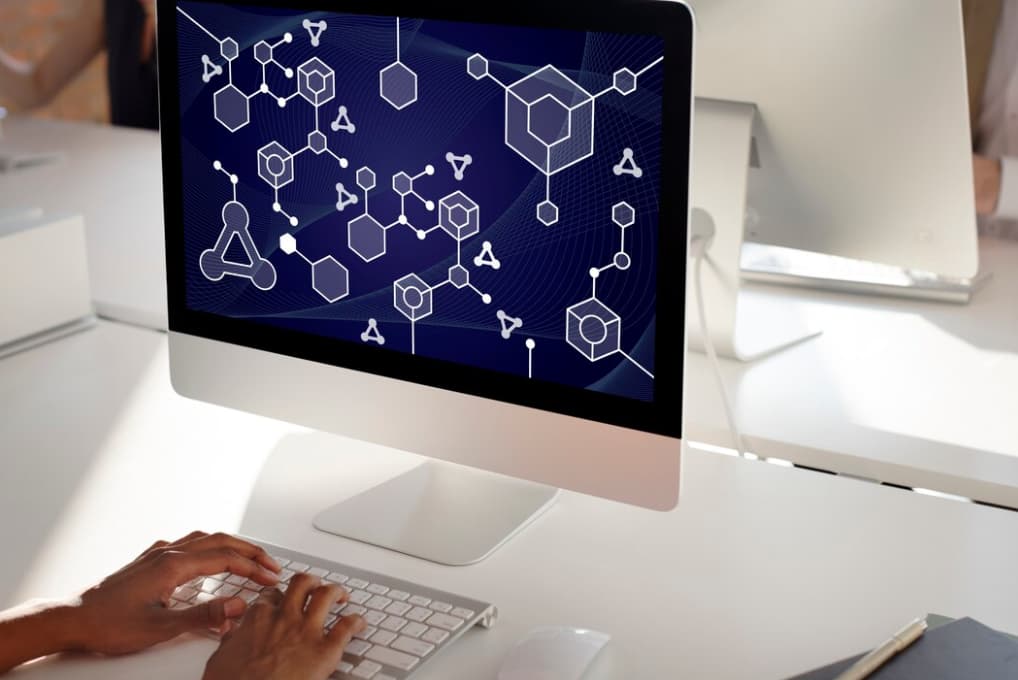Redefining Education: Blockchain’s Potential
The emergence of technologies like artificial intelligence, extended reality, and particularly blockchain, has brought about a transformative wave in the educational sphere. Blockchain, known for its role in revolutionizing finance and cryptocurrency through its decentralized ledger system, is now making significant inroads into the education sector.
A key contribution of blockchain in education is its role in streamlining the access and verification of academic credentials. Traditional methods of handling these records often suffered from a lack of transparency and efficiency, impeding the progress of the educational field. Blockchain technology provides a robust solution to these challenges, paving the way for a future where academic credentials can be validated and accessed effortlessly. While our article delves into the practical impact and potential of blockchain in education, a similar trend is evident in the business sector, where the implementation of blockchain is reshaping operational paradigms and presenting new opportunities.
The unique features of blockchain technology, such as its decentralized nature, the permanence of its records, traceability, and improved transparency, have the potential to significantly advance the educational sector. These features are particularly beneficial for people worldwide, regardless of their economic or geographical circumstances. The revolutionary advantages of blockchain have attracted the attention of numerous state-run educational institutions, which are now exploring how to integrate blockchain tools to enhance their operational efficiencies.
Blockchain in Education: A Closer Look
Blockchain technology can empower the education sector in myriad ways. Here’s a deeper exploration of how blockchain can transform education:
- Record Management in Education: In the past, managing educational records was fraught with inaccuracies and inefficiencies. Blockchain technology has the potential to transform this area. Educational records such as diplomas, credentials, and certificates, which traditionally required manual verification, can now be authenticated and stored efficiently through blockchain. Moreover, blockchain’s smart contracts can facilitate automatic validation of these documents based on preset criteria. This technology enables students to easily access and securely share their records with potential employers, streamlining the verification process and safeguarding records against external threats;
- Digital Transcripts: Creating transcripts is a cumbersome and slow process for educational institutions around the world. Each piece of information on a transcript must be carefully checked, involving a lot of paperwork and manual effort. Despite advancements in technology, many institutions still rely on outdated methods, such as postal services, for transcript exchanges. Blockchain can revolutionize this by offering a secure and immutable storage solution for sensitive information like academic grades. This not only benefits educational institutions but also streamlines the recruitment process, offering significant savings in time and resources;
- Decentralized Educational Systems: The potential of blockchain extends beyond a mere facilitative tool; it can form the backbone of entire educational institutions. Utilizing smart contracts, blockchain can streamline and automate interactions and transactions between students and educators, potentially reducing tuition costs and enhancing service reliability. This level of automation could free educators from many administrative responsibilities, safeguard student and faculty data through advanced cryptography, and reduce costs by eliminating middlemen;
- Financing in Education: Financial management is crucial in educational institutions, and blockchain offers innovative solutions in this area. It can be employed for managing teacher salaries, student scholarships, and funding for various grants and projects, ensuring transparency and fairness in financial dealings;
- Intellectual Property Protection: Plagiarism is a major concern in academic circles. Blockchain-based systems can regulate the distribution of copyrighted materials online and safeguard intellectual property. The unalterable and securely encrypted nature of blockchain data ensures that educational materials can be accessed safely, usage can be monitored effectively, and ownership rights can be easily established and protected.
Challenges Faced in Implementing Blockchain

While blockchain technology offers numerous advantages in the educational sector, its integration is met with several challenges. One of the primary concerns is security. Despite blockchain’s high security standards, it is not entirely foolproof. The security requirements in education vary significantly from those in finance, necessitating tailored security measures. Ensuring the safe storage of sensitive student information and academic records requires compliance with various state and federal data protection regulations, calling for enhanced security measures like advanced data encryption and strict access controls.
- Scalability is another issue. As the amount of student data increases, blockchain systems may face performance bottlenecks, particularly due to the decentralized nature of peer-to-peer verification inherent in blockchain networks. Additionally, the current adoption of blockchain in education is somewhat limited, predominantly used by a niche group of students and alumni for documenting their academic achievements. For broader adoption, significant investment from businesses in blockchain technology is required;
- Lastly, the cost factor plays a crucial role. While blockchain promises potential cost savings in the long term, the initial expenditure for widespread implementation can be quite hefty. This substantial upfront investment may deter educational institutions from fully embracing blockchain technology.
Looking Ahead: The Future of Blockchain in Education
The future of blockchain technology within the educational sector holds immense potential, notwithstanding the hurdles it currently faces. This revolutionary technology is poised to transform the educational landscape, altering how educational courses are administered and how students engage with their learning material. With the incorporation of blockchain, there’s a shift towards a more automated and individualized learning experience, greatly facilitated by the use of smart contracts.
- These contracts enable a more streamlined and efficient educational process, tailoring the learning experience to meet individual student needs;
- Consequently, learners are likely to gain a greater sense of autonomy and control over their educational journeys;
- This evolution in the education system, driven by blockchain, promises to create a more dynamic, responsive, and student-centered learning environment, marking a significant step forward in how education is approached and experienced.
The Pros and Cons of Blockchain in Education

While the benefits of blockchain in education are undeniable, it’s crucial to weigh them against the potential drawbacks. Here’s a balanced look at the pros and cons:
| Pros | Cons |
|---|---|
| Secure and transparent record-keeping | Potential security concerns |
| Streamlined verification and access to credentials | Scalability issues due to exponential data growth |
| Automated and personalized learning journeys | Low adoption rate due to high initial investment |
| Cost savings over the long term | Significant changes required to existing infrastructure |
FAQs
Blockchain technology brings numerous benefits to the education sector, including increased data security, ownership of academic credentials, and improved trust and transparency among educators, management, and students.
Blockchain technology is set to revolutionize the education sector, automating course progression and providing learners with complete control over their learning path through smart contracts.
Some key use cases of blockchain in education include efficient record-keeping, e-transcripts, copyright protection, and more.
Conclusion
Blockchain technology holds immense potential to transform the education sector by overhauling traditional methods and introducing efficient, transparent, and secure systems. Despite the challenges associated with implementation, such as security concerns and high initial costs, the advantages it offers can substantially improve the educational experience for all stakeholders. As the technology continues to evolve, it will play an increasingly vital role in shaping the future of education.
Blockchain technology presents unprecedented possibilities for the education sector, moving beyond its original application in financial realms to potentially revolutionize education’s traditional models. With the ability to offer unparalleled levels of transparency, security, and efficiency, blockchain could significantly impact how educational records are stored, accessed, and verified. However, it’s important to proceed with caution. While blockchain promises a plethora of benefits, the implementation comes with its own set of challenges including concerns related to security, scalability, adoption rate, and cost. As we continue to explore this dynamic technological landscape, the key to success will be in striking a balance between leveraging blockchain’s numerous advantages and mitigating its potential pitfalls.